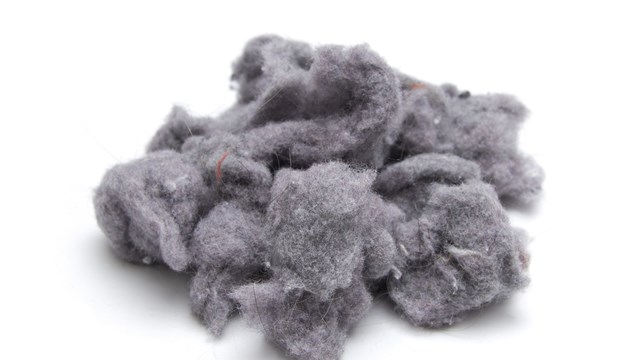Over the past three years, bedbug infestations have increased exponentially in New York City, causing panic among homeowners, co-op/condo boards and property managers. In 2004, there were 1,800 bedbug complaints recorded by the city. By last year, complaints had more than tripled, topping 7,000. Concern that 2008 will see even more bedbug activity recently prompted the city government to sponsor educational seminars for residents and property managers aimed at preventing and eradicating bedbug infestation.
The bedbug boom is not limited to New York City and other large metropolitan areas. In recent years, the age-old scourge has cropped up in all 50 states. The nightly news, local newspapers and blogosphere are full of reports of bedbug infestations. Numerous websites dedicate themselves to pinpointing the latest infestation sites and warning buyers and renters to steer clear. Luxury hotels have been sued by irate guests. Bedbugs have been reported in the tony co-ops of the rich and famous, in fashionable condominium buildings, in luxury apartments, in college dorms and in upscale suburban homes. Noted bedbug authority Michael Potter, an urban entomologist at the University of Kentucky, calls bedbugs the preeminent household pest in the U.S., on a par with cockroaches and rats. “This is one serious issue,” he recently told the New York Times. “This will be the pest of the 21st century—no questions about it.”
A Pest from the Past
“History is repeating itself,” Potter told the Times, explaining that many American beds were crawling with bedbugs before World War II. After the war, the use of potent chemicals like DDT sounded the death knell for bedbugs in America and most industrialized countries, but they continued to flourish in many other parts of the world. With environmental consciousness came safer—but less powerful—chemicals that have allowed bedbugs to dig back into American beds—often carried in on the clothing and suitcases of international travelers.
“If bedbugs transmitted disease, what’s happening would be considered a huge epidemic,” says bedbug expert Dini Miller, an entomologist at Virginia Tech. Fortunately, that doesn’t seem to be the case, according to an article in the July 16, 2007 issue of U.S. News & World Report which said, “Though bedbugs have been shown to harbor 28 pathogens temporarily—including HIV and Hepatitis B—numerous studies have shown the pathogens fail to thrive in the host enough to spread disease to people.”
So while they don’t pose a health threat, bedbugs routinely throw people into a state of hysteria. Wingless and about the size of an apple seed, bedbugs have flattened, oval-shaped bodies that are a light to reddish-brown in color. Feeding on human blood for three to 10 minutes at a time, the prolific nocturnal pests carry a psychological punch far out of proportion to their size.
“They come in the dark; they feed on you; they scurry away when you turn the light on,” said Lynn Kimsey, director of the Bohart Museum of Entomology at the University of California-Davis. Their bites can raise itchy red welts that bedevil their victims. There are stories of people dumping gallons of insecticide on their mattresses and dousing themselves with bug spray before they go to sleep. “I have people who call me in tears—they’re in hysterics,” admitted entomologist Richard Pollack of Harvard University.
Tough to Take Out
Bedbugs are tough to kill. They have a hard, shell-like cuticle for protection, can live for more than a year without feeding, and hide in tiny cracks and crevices, which makes it very hard for exterminators to reach them. Their eggs are tiny (about the size of a pin head), translucent and pearly white. Household insecticides won’t kill bedbugs and can actually cause them to spread as they seek new harborage. In fact, Potter and University of Kentucky researchers are starting to find bedbugs that are resistant to the pesticides commonly used to kill them.
In laboratory tests these “super bedbugs” have survived commercial pesticides at more than 10 times the recommended dose. Researchers sprayed laboratory bedbugs and bugs from four different apartment colonies with pyrethoid insecticides, the most common professional insecticide used to kill bedbugs. When sprayed, the laboratory bedbugs—which had never been exposed to the insecticide—were decimated completely; among the apartment bedbug populations however, there were few mortalities. In fact, those insects were immune to sprays that were two to three hundred times the recommended dosage prescribed by the insecticide manufacturer.
Say Freeze!
Complicating matters, people often have trouble enduring pesticide treatments and the residues they leave. A revolutionary new bedbug eradication treatment called Cryonite provides a safer solution. Popular in Europe and Australia but only recently introduced in the United States, Cryonite does not use chemicals or leave noxious or poisonous residues. It’s a completely “green” solution to killing bedbugs that’s safe for people with sensitive skin, allergies, asthma, medical conditions, babies, young children, the elderly, even pets. The treatment is applied dry, and leaves no liquid residue, allowing for immediate use of the home or building after treatment.
Cryonite uses pressurized, freezing-cold carbon dioxide (CO2) vapor, which seeps into cracks, crevices and other hiding places to kill bedbugs, cockroaches and most other insects in every stage of their development. As the thin layers of pressurized CO2 “snow” hit surfaces, they vaporize, causing extreme, instantaneous cooling of any organism with which the gas comes in contact. In effect, it freezes the cells of insects, crystallizing the water in their cells on contact. The insect is instantly immobilized and it takes only moments for death to occur.
Encasements are another important weapon in the property owner’s bedbug eradication arsenal. Encasements protect your investment in mattresses and box springs from bedbugs. If bedbugs occur, they can’t get through the encasement to infest mattresses and box springs. If bedbugs are already evident, they and their eggs are trapped inside the encasements where they eventually suffocate and die. Bedbug-proof encasements are made with breathable materials that are impervious to bedbug bites but guarantee a comfortable night’s sleep. Specially designed seams and zippers keep bugs from crawling in or out. Encasements are meant to remain on your mattress and box springs for as long as you own them, forever protecting your investment from bed bug infiltration.
Bedbugs may not be dangerous, but they definitely are gross—the best strategy is to avoid getting them, but if you’re not so lucky, the next best thing is to have an aggressive plan of attack to rid your home of these pesky pests.
Douglas Stern is managing partner of Stern Environmental Group in Secaucus, New Jersey.







3 Comments
Leave a Comment